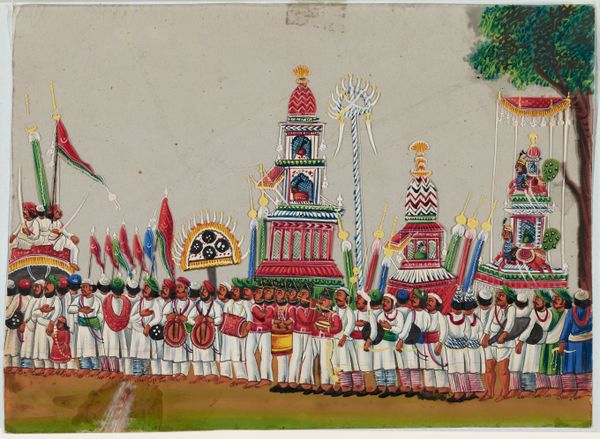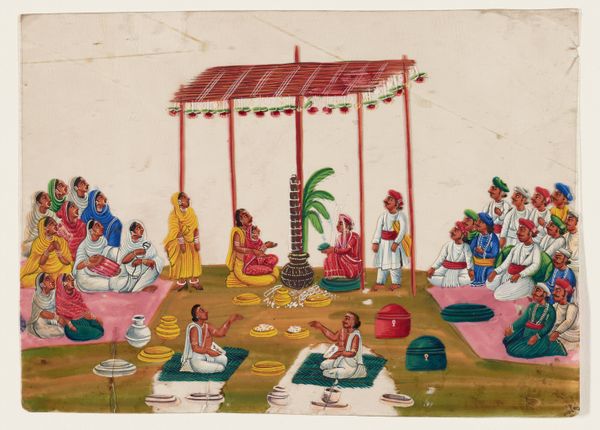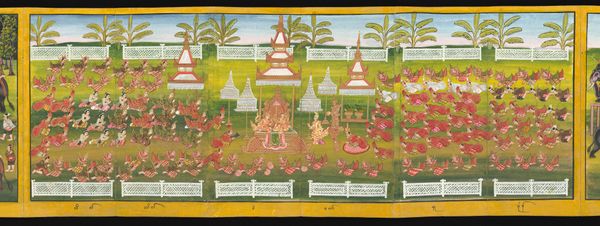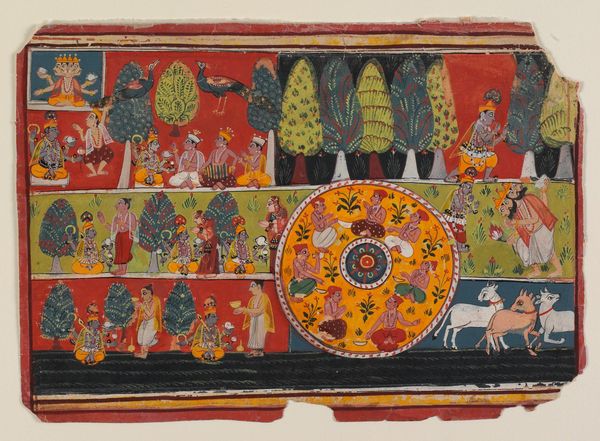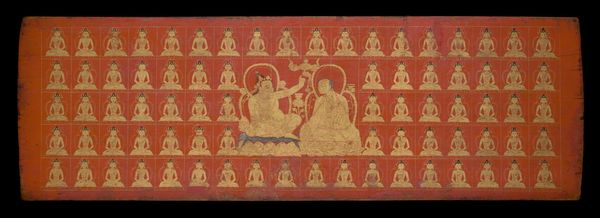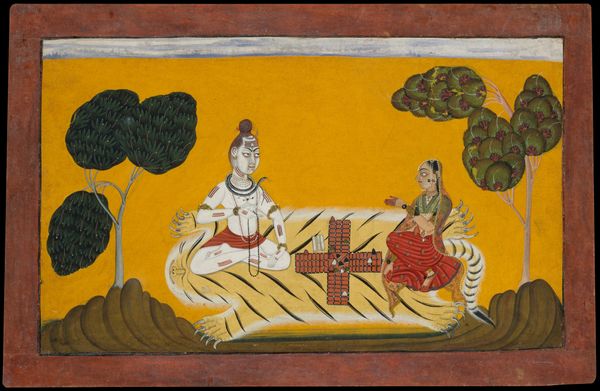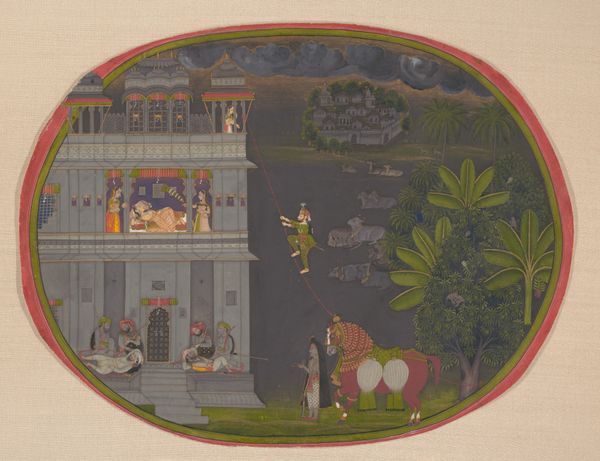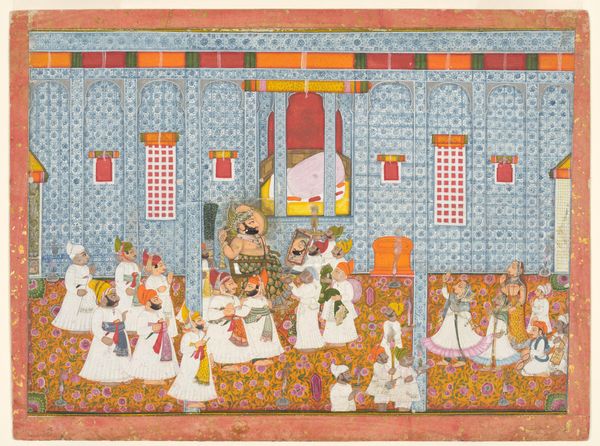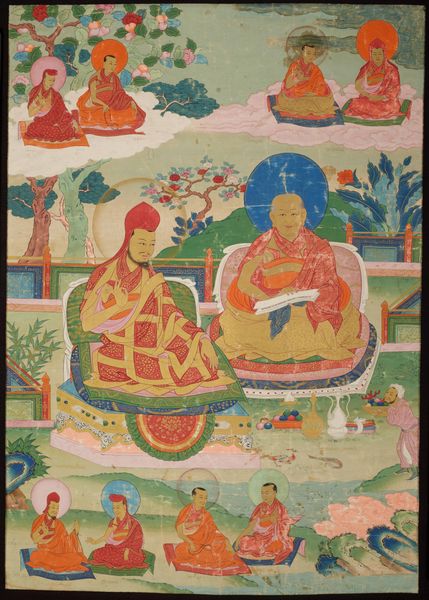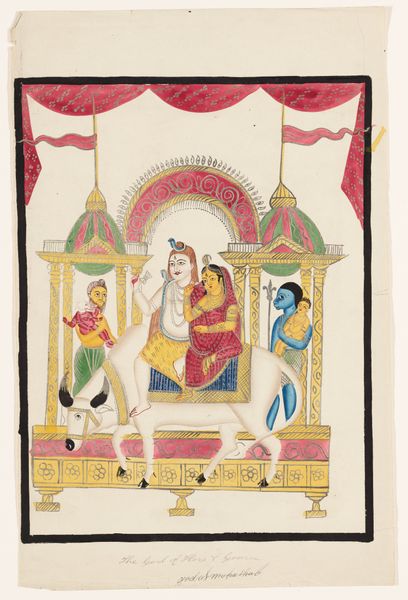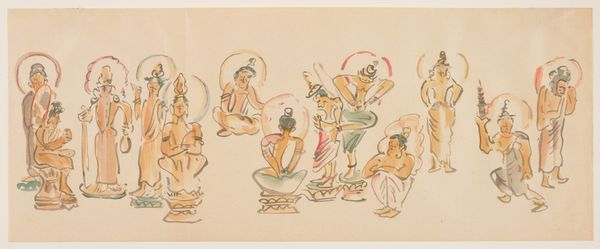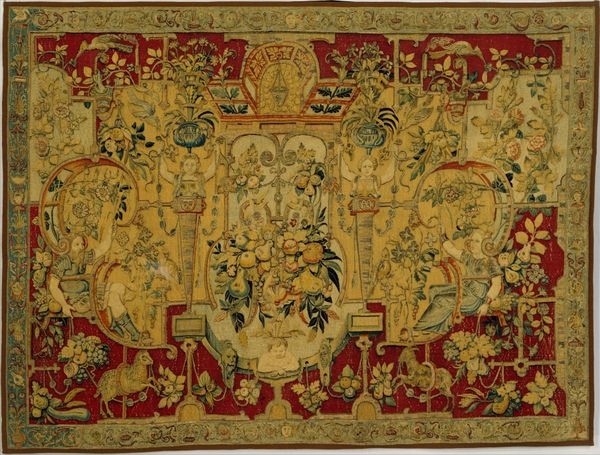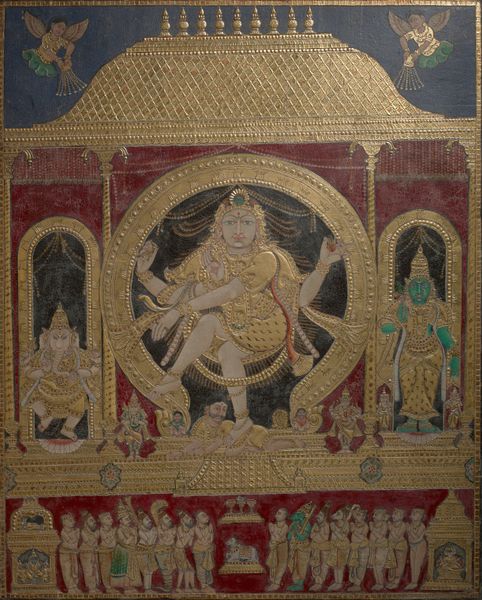
painting
#
narrative-art
#
painting
#
asian-art
#
folk art
#
figuration
#
naive art
#
painting art
#
decorative art
Dimensions: 5 1/2 x 7 7/8 in. (14 x 20 cm)
Copyright: Public Domain
Editor: This tempera painting, "Priests Worshipping the Goddess Kali," dates to around the 19th century and is currently held at the Minneapolis Institute of Art. It has such an intricate, theatrical quality to it, almost like a staged drama. I’m really drawn to how all the figures are arranged. What stands out to you when you look at it? Curator: What strikes me is the cultural context. The painting offers a window into the visual culture surrounding Kali worship during that era. Its creation was inevitably influenced by the socio-political forces at play, including colonial impact and its reflection of religious practices. Note how the decorative art style serves to express and perhaps also reinforce religious hierarchy. Editor: Hierarchy, how so? Curator: Think about it. The goddess is elevated, literally, above the priests. And how the supplicants are carefully arranged and segmented to visually indicate ranks within their priestly group. How do you think the artistic patronage shaped its overall design and execution? Editor: That's fascinating! Perhaps the patrons influenced not only the opulence of the setting but also how traditionally the deity was presented and how rigidly were presented their social order, making sure those elements were depicted 'correctly'. It gives a different insight, shifting away from pure faith towards the complex politics surrounding religion. Curator: Precisely. Considering its eventual public display, perhaps during religious festivals or ceremonies, how might the artist and patron want its viewers to interpret it, especially regarding religious authority? Editor: That framing really makes me rethink how I initially viewed the work. It's not just a depiction of worship, but a statement about power, belief, and the social structures intertwined within it. Thanks, that gives me a richer appreciation for this work.
Comments
No comments
Be the first to comment and join the conversation on the ultimate creative platform.
